“Animation is not the art of drawings that move but the art of movements that are drawn.”
Norman McLaren
There are some evidences of early motion in art that can be considered similar to animation drawings, there were unlikely meant to be animation though.
 Sequence of images that minimally differ from each other, from the site of Burnt City in Iran, late half of 3rd millennium B.C.
Sequence of images that minimally differ from each other, from the site of Burnt City in Iran, late half of 3rd millennium B.C.
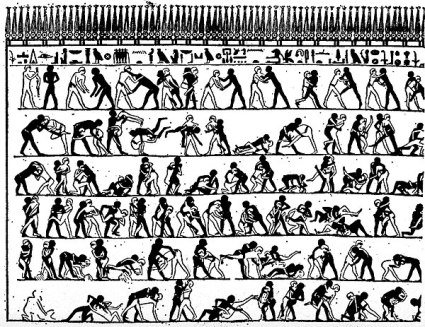
An Egyptian burial chamber mural, 4000 years old, showing wrestlers in action
Phenakisticope (1833)
one of the devices with rapid successive pictures spacing around a disk placing and spinning in front of a mirror, Phenakisticope, was invented by Joseph Plateau in 1833 and at the same time by Simon von Stampfer. As the disc was spinning each picture was replaced by the next one. It had a plate with 16 frames presenting a pirouetting dancer with a complete turn. Simon von Stampfer called it stroboscopic disc.The publication of phenakisticope was very successful and adopted other names like Fantascope, The Stroboscope and Phenakisticope.
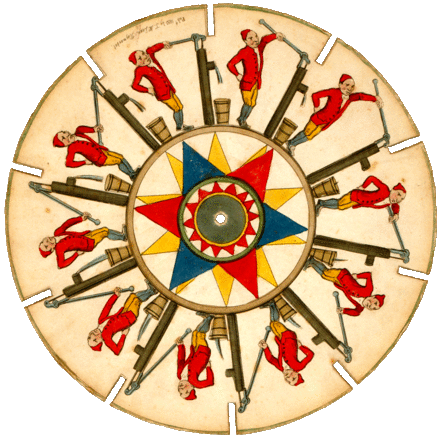 Faulty animation from an 1833 McLean’s Optical Illusions, or, Magic Panorama disc (slits appear still when viewed through a phénakisticope)
Faulty animation from an 1833 McLean’s Optical Illusions, or, Magic Panorama disc (slits appear still when viewed through a phénakisticope)
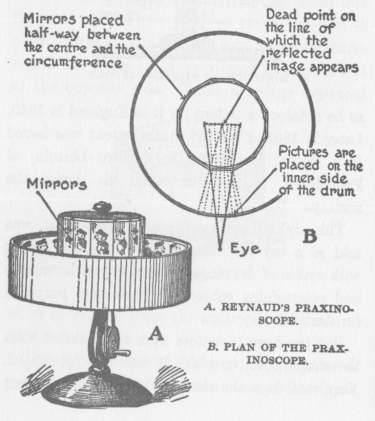
Flip Book (1868)
The first flipbook was invented by John Barnes Linnettin 1868 who called it kineograph ,means “moving picture”. It is considered as the first animation in a linear series of images like a booklet that shows a piece of story rather than circular drums.

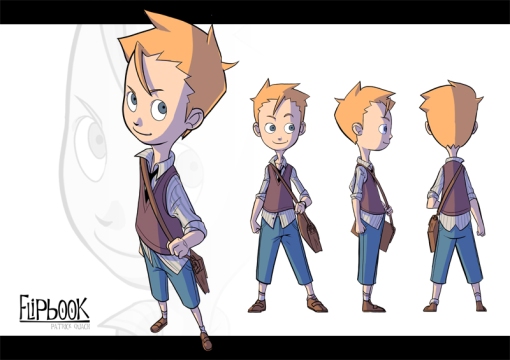
After Linnettin, by 1900 several pioneers invented amazing moving images, Eadweard Muybridge is a great example. He was a successful landscape photographer who invented in 1870’s some equipped cameras with ability of taking similar pictures in rapid order so that when put aside together, they can be viewed quickly one after another and seemed like moving images.

Eadweard Muybridge’ sequential images were to become the first moving images with photographic quality (1878-1887)
In 1894, Herman Casler made a machine named Mutoscope to form a machinized flip book in which rather than to be painted on pages of a book, the pages were mounted on a spinning cylinder. The machine remained a genius through mid-20th.
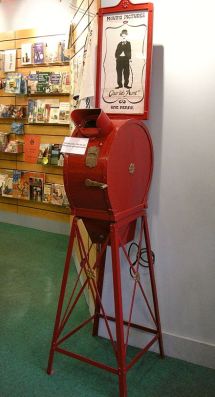
Mutoscope at Herne Bay Museum
Praxinoscope (1877)
The ‘Praxinoscope’, later developed in ‘zoetrope’, invented in 1877 in Franc by Charles Emile Raynaud and considered as the first projected animation, was a series of images put in the inner side of a spinning cylinder, as the wheel would turn the reflection of images appeared stationary rapid succession of pictures. The illusion of emotion was brighter and less twisted than zoetrope.
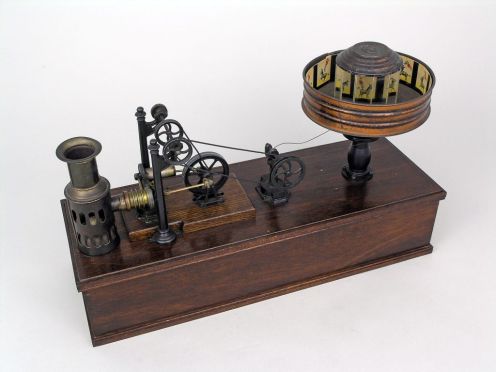
Théâtre Optique (1889)
In 1889 Raynaud improved praxinoscope in a way that a larger roll of images could be projected the device named Théâtre Optique, with using transparent pictures of successive moving images that he had used in his hand painted film called Un bon bock (A good beer). He showed the film to a small audience. The Théâtre Optique turned to be settled on a contract with daily regular films and screenings until 1900 when it was completely overcome by Lumiere Brothers new technology and in 1956, the introduction of ‘Red Raven Magic Mirror’ in America with its 16-sided reflectors rotated on a record player’s was a revision of Praxinoscope.
After movies were born by attempts of Thomas Edison and at about same time by the Lumière brothers to invent first movie cameras and projectors and presenting the first movie to public, a lot of very short movies were mad. Le Voyage dans la Lune (A Trip to the Moon) a French black-and-white silent movie directed by George Meliés in 1902 is the first example of using special effects and animation when the spaceship lands in the Moon’s eyes.
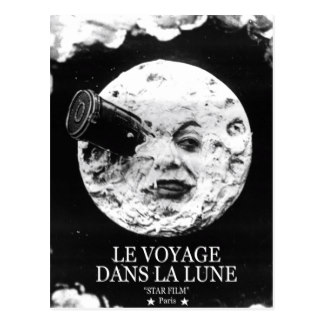
Animation between 1900 and 1921
Stuart Blackton‘s Humorous Phases of Funny Faces in 1906 used chalkboard sketches and cut-out style animation. He made thousands of line drawings for his three films in 1910s. By 1920s technical simplifications like printing, celluloid sheets made animated cartoons one of the important commercial projects. In these period some surreal ideas came to American animation.
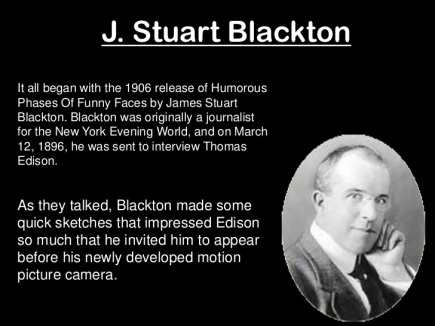

Walt Disney (Steamboat Willie:1928, Snow White:1937)

Mickey Mouse is an American cartoon created in Walt Disney Studio in 1928 by Walt Disney and Ub Iwerks in black-and-white sequential drawings techniques. The character Mickey Mouse was showed first in test screening silent cartoon Pane Crazy which was a fail, then officially in first sound cartoon Steamboat Willie in 1928, a start of golden age of animation. Disney is considered as the pioneer of synchronised sound, having a musical point, featured a post-produced sound track. The actions had performed in loops in a way that there is repeating of drawings. Primarily Mickey was for short films, he appeared in feature-length films as well. A noticeable number of Mickey Mouse won the Academy Award for Best Animated Film. He appeared in books as a comic strip character, also in TV series and video games.
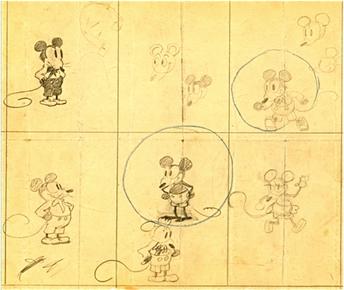
Concept art of Mickey from early 1928; the sketches are the earliest known drawings of the character
less than one decade the great improvement of Disney company happened by making Snow White and Seven Dwarfs in 1937 based on a German fairy tale. In addition to be considered as the first full-length animated feature cartoon, in 83 minutes, it was the first cartoon used Technicolor and a large scale of multi plane camera. Disney came to make Snow White for the opportunity they could make in artistic creativity in animals. After hard working on sketches, Disney got rid of them and used real actors to represent the motions of what he would want to be the final animated movements of the characters, then the animators drew the sketches from the pictures of real footage.
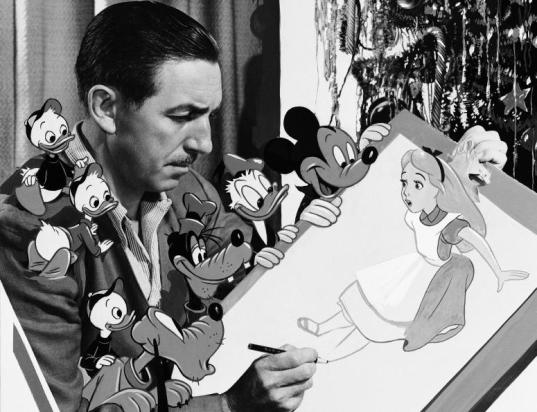

A birth to modern Animation- George Dunning (1968)
The Beatles: Yellow Submarine made by George Dunning in 1968 is a musical comedy British animation. The film was an inspiration of the music of Beatles who participated in the film in the closing scene, other actors voiced their animated counterparts. Before that animation was mostly for kids, Yellow Submarine was an entertainment subversion which makes the audiences laugh at themselves and enjoy at the same time. The animators of Yellow Submarine used media no one had used before; using postcard it presents a sub takes off and travels above live settings. Using a lot of tricks, the work opened way to modern animation. There was no use of automated software in film restored elements; they took one frame at a time, rotoscoping technique and 3-D sequences techniques as well.
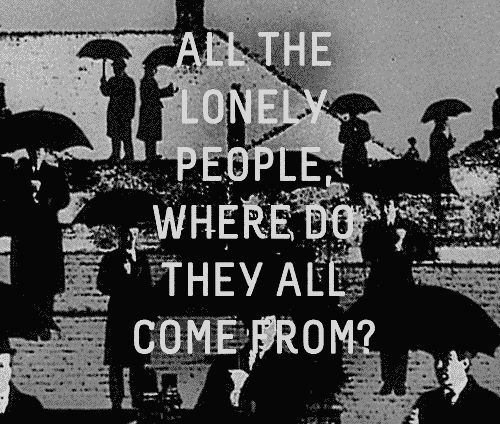
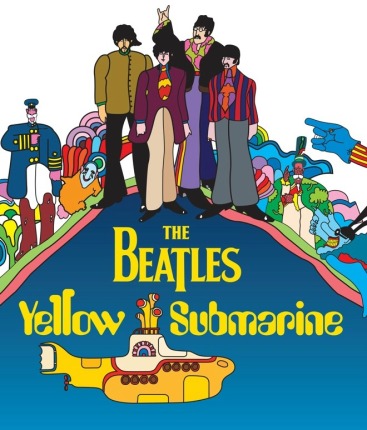
Anime (1917)
Japan’s first animation was released in 1917 by Shimokawa Oten, a very short film made with chalk. In fact in 1917 about twenty anime were released in Japan. Shimokawa along side with Junichi Kouchi influenced by World War 1 were the pioneers of anime. During World War 2 the first feature one was made called Momotaro: Umi no Shinpei. During 1970s the Western roots was seperated from anime, HAyao Miyazaki is an example of this period. The Golden age of anime appeared in 1980s. In 1995 constructions of robot genre animation gained the attention of anime. It had an influence on robot shows. Neon Genesis Evangelion made by Gainax is one example.
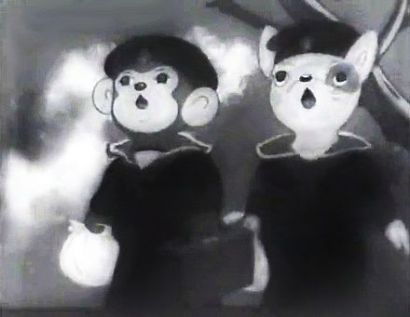
Screenshot from the film Momotaro: Umi no Shinpei, where Monkey and Puppy are saying goodbye.
Akira (1988)
Akira by Katsuhiro Otomo in 1988,an international success in hand-drawn animation. Later in 2003 other production of the same animators called Spirited Away won the Academy Award as the best Animated feature. One thing about Akira animation techniques is the attention the animators have paid to details, to every single frame in the work and this is why Akira is still one of the most achievement in hand-drawn animation. Once Otomo said just through animation Akira’s world could have been shown: “It is extremely difficult to express the depth of such a vast city”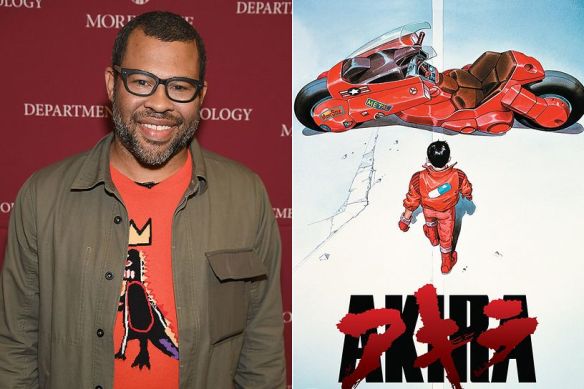
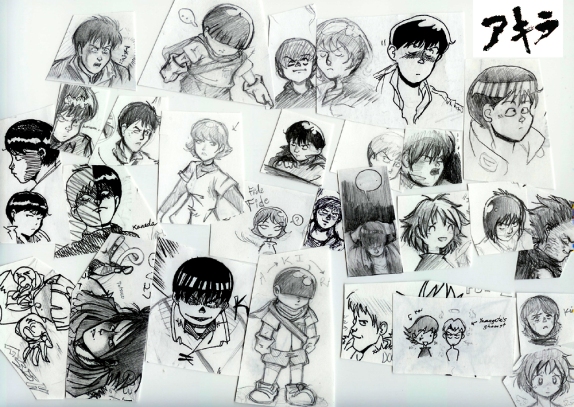
Claymation- Nick Park (1990)
Made in 1990 by Nick Park, Wallace and Gromit is a British clay comedy animation considered as presenting both modern culture and english people in general. taking modelling clay, Nick went into plasticine construction and got a high position in the technique. It was presented in three short films and one length feature film. The first three called A Grand Day Out, The Wrong Trousers and A Close Shave and in 2005 the length feature one, Wallace and Gromit: The Curse of the Were-Rabbit, was released.

Creator Nick Park with his characters in 2005
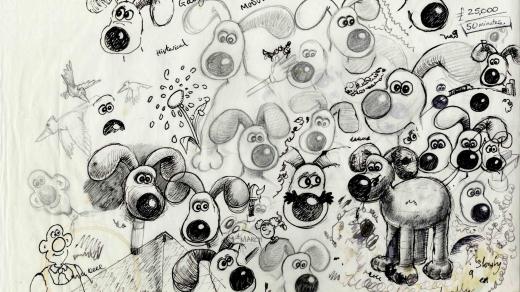
The films are shot in stop-motion technique, moving characters a little bit at a time and taking one frame, in some areas duplicate frames and multiple exposure have been used to create the effects of motion blur. Computer animation has been used for some effects like fire and smoke.
CGI Animation
Pixar Animation Studio’s Toy Story in 1995 was the first feature-length computer-animated film. Toy Story appeared after Tin Toy in 1988 which was a small success. The film reviewed by critics and were nominated for three Academy Award.
Lasseter the director said: “We had to make things look more organic. Every leaf and blade of grass had to be created. We had to give the world a sense of history. So the doors are banged up, the floors have scuffs.” 400 computer models used for animating the characters. The characters were of clay or modelled off of computer drawn diagrams. For the character Woody 723 motion controls have been used. Eight teams had reviewed every single shots and colour and lighting were placed on shots. Placing models in the shot was done with keeping the real limitations of making a live action film. For characters’ facial expressions, they spent a week for every 8 seconds of the work.
Ed Catmull, who first was a software engineer and then became Pixar and Disney Animation President, once told TIME: “At that point, none of us knew what we were doing. We didn’t have any production expertise except for short films and commercials. So we were all complete novices. But there was something fresh about nobody knowing what the hell we were doing.”
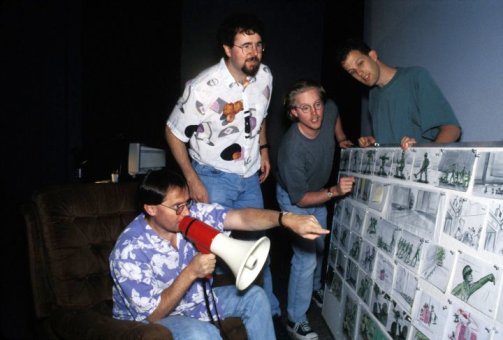
Toy Story Director John Lasseter with Joe Ranft, Pete Docter, and Andrew Stanton Courtesy Deborah Coleman/Pixar
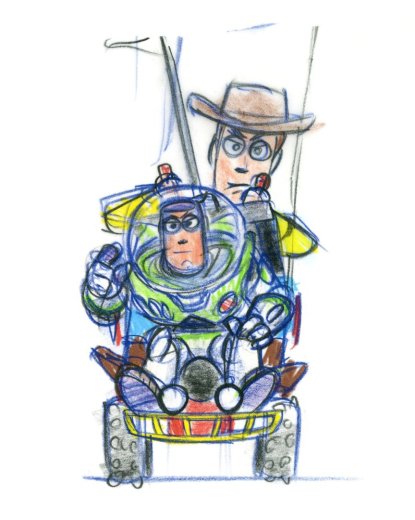
REFERENCES:
- Herbert, S. (2013). ‘The Phenakistiscope, and Stroboscopic Disc’. [online] stephenherbert.co.uk. Available at: http://www.stephenherbert.co.uk/phenakPartOne.htm [Accessed 12 Oct. 2017].
- History of animation. Available at: https://en.wikipedia.org/wiki/History_of_animation [Accessed 12 Oct. 2017].
- Williams, R. (2009). ‘The Animator’s Survival Kit’, Faber and Faber
- Fliptomania, Inc. (2014). ‘A History of Flipbooks and the Moving Image’. [online] Fliptomania.com. Available at: http://fliptomania.com/did-you-know/ [Accessed 14 Oct. 2017].
- Linnett, J. (2013). ‘Flip Book History’ [online] caworld3.wordpress.com. Available at: https://caworld3.wordpress.com/tag/john-barnes-linnett/ [Accessed 14 Oct. 2017].
- Vase animation. Available at: https://en.wikipedia.org/wiki/File:Vase_animation.svg [Accessed 15 Oct. 2017].
- Chronicles of animation (2013) ‘Charles-Emile Reynaud: The Praxinoscope’ [online] Available at: https://chroniclesofanimation.wordpress.com/2013/03/12/charles-emile-reynaud-the-praxinoscope/ [Accessed 15 Oct. 2017].
- Simmon, S. ‘Notes on the Origins of American Animation, 1900-1921’ [online] Ioc.com. Available at: https://www.loc.gov/collections/origins-of-american-animation/articles-and-essays/notes-on-the-origins-of-american-animation-1900-1921/ [Accessed 16 Oct. 2017].
- Telegraph reporters (2014). ‘Landmarks in animation history: from Mickey Mouse to Simpsons’. [online] telegraph.co.uk. Available at: http://www.telegraph.co.uk/culture/disney/11108200/Landmarks-in-animation-history-from-Mickey-Mouse-to-Simpsons.html [Accessed 24 Oct. 2017].
- Korkish, J. (2012). ‘Mickey Mouse’. Available at: https://en.wikipedia.org/wiki/Mickey_Mouse#Origin [Accessed 24 Oct. 2017].
- Backlots (2012). ‘Snow White and the Seven Dwarfs (1937)’. [online] backlots.net. Available at: https://backlots.net/2012/11/28/disney-production-process-and-innovations-in-animation-technique-in-snow-white-and-the-seven-dwarfs-1937/ [Accessed 25 Oct. 2017].
- Weinstein, J. (2012). ‘How the Beatles’ Yellow Submarine gave rise to modern animation’. [online] theguardian.com. Available at: https://www.theguardian.com/film/2012/nov/19/beatles-yellow-submarine-simpsons-shrek [Accessed 25 Oct. 2017].
- Metzger, R. (2012). ‘The Beatles’ classic 1968 animated feature film, ‘Yellow Submarine’. Available at: http://dangerousminds.net/comments/the_beatles_classic_1968_animated_feature_film_yellow_submarine [Accessed 25 Oct. 2017].
- Momotarō: Umi no Shinpei. Available at: https://en.wikipedia.org/wiki/Momotarō:_Umi_no_Shinpei [Accessed 25 Oct. 2017].
- Harries, S. (2015). ‘Behind the Scenes AKIRA Art Shows Why It’s Still the Pinnacle of Hand-Drawn Animation‘. Available at: https://moviepilot.com/posts/3120937 [Accessed 25 Oct. 2017].
- Osmond, A. (2011). ‘Akira: The Story Behind The Film’. Available at: https://www.empireonline.com/movies/features/story-behind-film-akira/ [Accessed 26 Oct. 2017].
- Toy Story. Available at: https://en.wikipedia.org/wiki/Toy_Story#Animation [Accessed 26 Oct. 2017].
- Zorthian, J. (2015). ‘How Toy Story Changed Movie History’. Available at: http://time.com/4118006/20-years-toy-story-pixar [Accessed 30 Oct. 2017].
- <https://youtu.be/hY4P87vO_vE> [Accessed 2 Nov. 2017].

